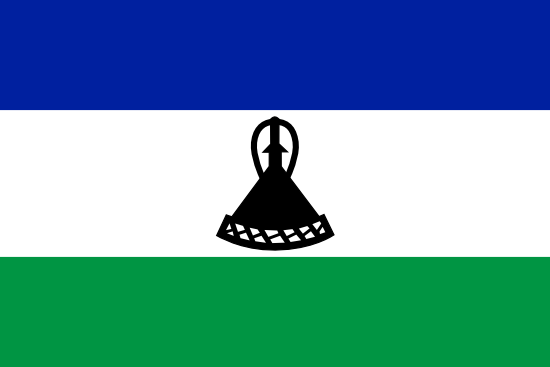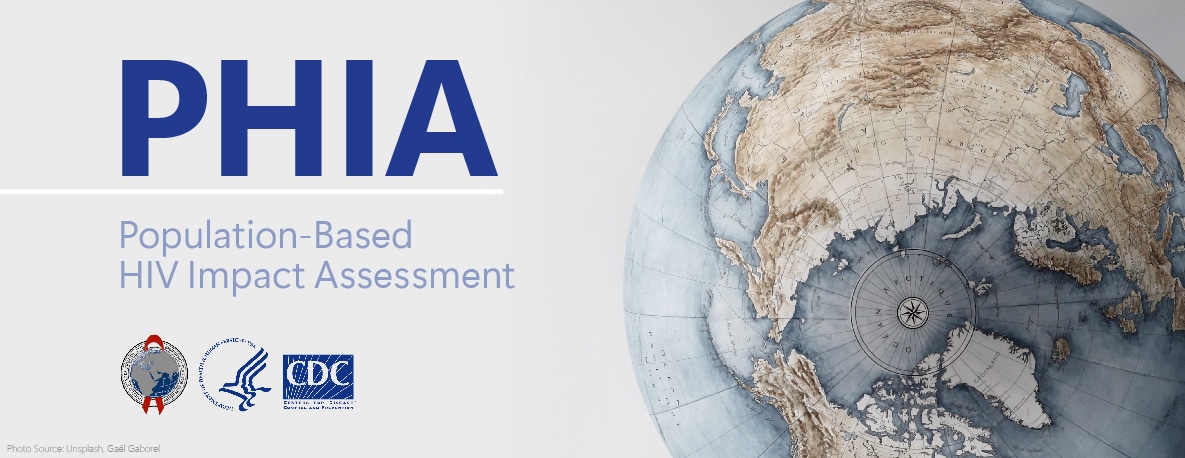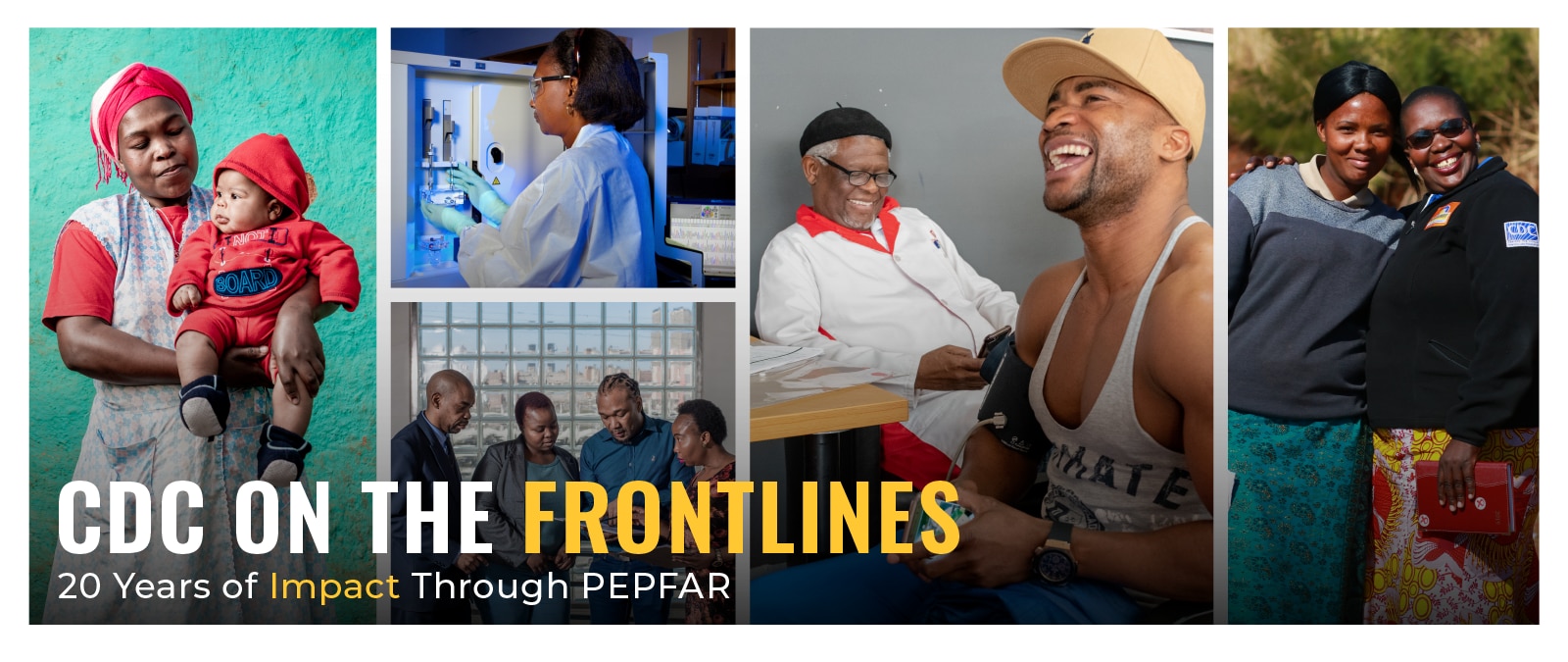Lesotho Country Profile

Lesotho Country Profile
Discover more about CDC’s work in Lesotho by viewing our detailed country profile
Country Overview
CDC has partnered with the Government of Lesotho since 2007 and continues to support the Ministry of Health and Social Welfare’s efforts around HIV and tuberculosis (TB) treatment. These efforts include improving health information systems, increasing laboratory capacity, preventing mother-to-child transmission of HIV, and HIV counseling and testing. Additionally, CDC works with the Ministry on diagnosing, treating, and managing TB, multidrug-resistant TB, and TB/HIV coinfection. CDC also enhances Lesotho’s efforts to strengthen disease surveillance, monitoring and evaluation, and health information systems needed for the national HIV response.
Per Capita GNI
$1,260
(2022)
Population (million)
2.30
(2022)
Under 5 Mortality
72.9/1,000 Live Births
(2021)
Life Expectancy
53 Years
(2021)
Estimated HIV Prevalence
19.3%
(Ages 15-49): (2022)
Estimated AIDS Deaths
3,700
(Age≥15) (2022)
TB Treatment Success Rate
76%
(2020)
Estimated TB Incidence
614/100,000
(2021)
Estimated Orphans Due to AIDS
93,000
(2022)
TB patients with known HIV-status who are HIV-positive
55%
(2021)
Reported Number Receiving Antiretroviral Therapy (ART)
229,715
(Age≥15) (2022)
Strategic Focus
The Centers for Disease Control and Prevention (CDC)-Lesotho office opened in 2007. CDC supports an integrated continuum of services that includes improvement in public health policies, prevention interventions, Tuberculosis (TB)/HIV, treatment, health management information systems, and improved laboratory capacity. This support is provided in close partnership with the Ministry of Health (MOH) and implementing partners. CDC plays an integral role in providing the MOH with technical and administrative leadership in its program areas.
Comprehensive HIV Treatment and Prevention Services
CDC works closely with the MOH and other in-country partners to scale-up HIV prevention, and treatment services, including preventing mother-to-child HIV transmission (PMTCT), counseling and testing services, and integrated TB/HIV service delivery using a district- based approach. CDC works with Lesotho’s MOH to support HIV and TB program activities. CDC provides technical leadership in building human capacity for HIV/TB treatment programs by supporting training and mentoring for health workers.
Strengthening Laboratory Systems
CDC provides technical assistance to implement quality laboratory systems, laboratory diagnosis and monitoring tests, and new diagnostic technologies. CDC, in partnership with its implementing partners, provides the necessary technical expertise in developing local capacity for effective coordination of laboratory programs to improve service quality.
Strengthening Strategic Information
CDC and its implementing partners support Lesotho’s efforts to implement surveys and surveillance, monitoring and evaluation, and health information systems needed for the national HIV response.
Key Activities and Accomplishments
HIV Treatment Services: CDC has supported the national implementation of the 2016 WHO Consolidated Guidelines on the Use of Antiviral Drugs for Treating and Preventing HIV Infection. Lesotho was the first country in sub-Saharan Africa to implement the Test and Start strategy nationwide. CDC’s support for treatment services are focused in four of Lesotho’s ten districts (Berea, Leribe, Qacha’s Nek, and Quthing).
Tuberculosis: CDC has worked closely with the MOH to improve Antiretroviral treatment (ART) uptake among TB/HIV co-infected people. Approximately 72% of TB patients in Lesotho are co-infected with HIV. TB activities are integrated into all HIV clinical services funded by CDC. Recent CDC support for TB control efforts include an evaluation of the national TB/HIV program, a research project involving TB services for miners, and a survey of drug resistance.
Community-based HIV Testing Services: CDC supports community-based HIV testing services which aim to reach groups who traditionally do not access health care facilities such as men, adolescents, and young adults as well as key populations (KP) (e.g., men who have sex with men (MSM) and commercial sex workers). New initiatives include self-testing, community-based HIV treatment initiation, and partner notification.
Laboratory: CDC has played a lead role in Lesotho’s efforts to scale-up laboratory capacity for viral load (VL) testing by supporting two new facilities to conduct testing and by procuring VL/Early Infant Diagnosis (EID) reagents and TB test supplies for the national program. As of 2018, Lesotho has the capacity to provide viral load testing for all patients receiving HIV treatment.
Strategic Information: CDC supported the Lesotho Population HIV Impact Assessment (LePHIA), a national survey conducted in 2016-2017 that included HIV risk factors and biomarkers. Results of the survey showed that 77% of persons 15-59 years of age living with HIV in Lesotho had been diagnosed, 90% of individuals who had been diagnosed were on treatment, and 88% of those on treatment were virally suppressed. These results indicate that Lesotho is making good progress towards the UNAIDS goal of 90 90 90 by 2020.

Tracking PEPFAR Impact Toward Global Targets
The U.S. Centers for Disease Control and Prevention (CDC) works with partners including host countries, local implementing partners, faith-based organizations, and other community-based organizations to measure progress towards HIV epidemic control in countries supported by the U.S. President’s Emergency Plan for AIDS Relief (PEPFAR).

CDC Celebrates 15 Years in Lesotho
In 2022, the U.S. Centers for Disease Control and Prevention (CDC) marked 15 years of partnership with the Government of Lesotho through the Ministry of Health (MOH). This significant milestone demonstrates CDC’s ongoing commitment to supporting the people of Lesotho in addressing public health threats, meeting public health goals, and ultimately saving lives.

CDC On the Frontlines
Over the past 20 years, the U.S. President’s Emergency Plan for AIDS Relief (PEPFAR) has saved millions of lives as a leader in the global response to two of the world’s deadliest infectious diseases – HIV and TB. As a key implementing agency of the U.S. President’s Emergency Plan for AIDS Relief (PEPFAR), CDC is at the forefront of these global efforts to treat and prevent these diseases.